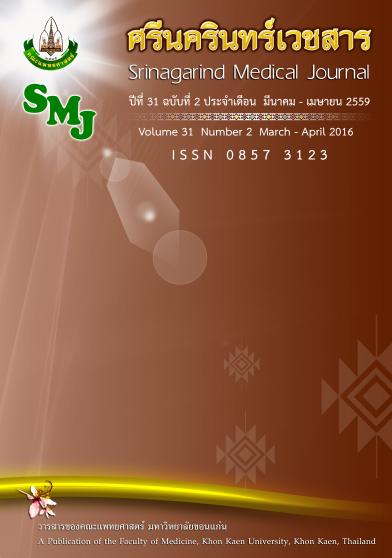Pharyngocutaneous Fistula Following Total Laryngectomy Comparing between the Early and Delayed Oral Feeding
Abstract
Background and Objectives: Delay oral feeding is a method for prevention of pharyngocutaneous fistula (PCF) after total laryngectomy. But the recent studies showed that early oral feeding doesn’t increase PCF. The objective of this study is to compare the incidence of PCF in patients who underwent total laryngectomy with different onsets of oral feeding.
Materials and methods: This study is a retrospective cohort study collecting patients in Srinagarind Hospital who underwent total laryngectomy since January 1st, 2001 until October 31st, 2011. The patients were divided into early oral feeding group (within 7 days after surgery) and delayed groups (more than 7 days after surgery) and the incidence of PCF was collected.
Results: There were 133 patients,41 in early oral feeding group and92 in delayed feeding group. There were 20 patients who had PCF (15%),3 in early oral feeding group (7.3%) and17 in delayed oral feeding group (18.5). There was no statistical significant difference between the two groups (p-value = 0.096).
Conclusion: The incidence of PCF after total laryngectomy in the early oral feeding group was not significantly different than the delayed oral feeding group.




